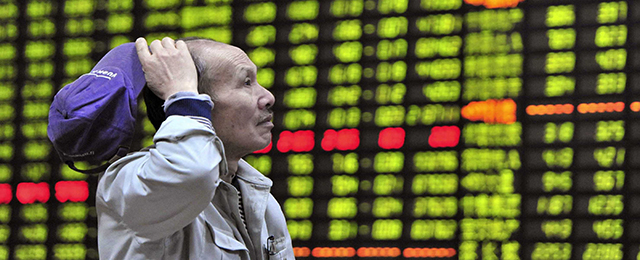In an unusual step on June 27, the People’s Bank of China cut its lending rate and reserve-requirement ratio (RRR) for commercial banks. The central bank announced it would lower its benchmark lending rate by 25 basis points to 2 percent and the RRR for certain banks by 0.5 percentage points through a targeted rate cut instead of a universal one.
Officially, the central bank said the synchronized moves were aimed at “maintaining growth and lowering the borrowing costs via structural adjustment,” but their timing made them appear more like an effort to support the stock market.
The growth of the economy remains sluggish, but there are a few bright spots on the horizon. Home sales and their prices have apparently been recovering since April, and industrial growth in terms of value added has also picked up modestly.
Meanwhile, a raft of stimulus policies unveiled over a short period has also helped ease the downward pressure. What’s more, the central bank provided more liquidity last week amid a spike in short-term interest rates for interbank borrowing. As a result, the seven-day repurchase rate, a gauge of funding availability in the banking system, was down to 1.5 percent on June 26, the lowest this year. So, from a macro economic perspective, the June 27 changes were surprising.
For stock market investors, the easing of money supplies via such highly symbolic cuts could not come at a better time. Over the past two weeks, the Shanghai Stock Market index has dropped by 19 percent and the indexes for Growth Enterprise Market were down by one-quarter.
A drastic fall in stock prices has begun to trigger sell-offs by margin traders – investors playing in stock markets with borrowed money. If prices are allowed to fall freely, it could result in a crash in margin trading, which would eventually cause the stock market to collapse, threatening the soundness of the entire financial system.
At a time when a sentiment of panic pervades the market, the moves by the central bank help stabilize the market by reining in financial risks.
However, as far as investors are concerned, the key issue here is how they should interpret the long-term significance of the easing policies and how policymakers perceive the stock markets and what the impact their view will have.
The populist take is that the rate cuts mean the stock markets have taken control of policymakers, and as such regulators will have to adopt a friendly attitude toward the bourse, maintaining a bullish trend to avert financial risks.
But in my view the easing policies mean the stock markets will have to deal with greater pressure as a result of policy changes in the future.
The rate cuts show that regulators are paying unprecedented attention to risks in stock markets given the trillions of yuan they have absorbed, and the fact that any policy adjustment could cause a chain reaction whose consequences could get out of control.
On top of that, banks have put a great deal of their capital into the stock market and a major plunge would result in a lot bad loans, which would put the soundness of the entire financial system at risk. It was concern over these enormous risks that prompted the central bank to cut the rates.
From the government’s point of view, regulators could choose to fuel the stock market bubble, which would further elevate the financial risks, or they could move to rein in the markets, gradually defusing a time bomb. I believe that a lot of people prefer the latter.
So in the short run, regulators may continue to roll out policies that appear good for the stock market. Such tactics are only a compromise against a backdrop of a drastic fall in the stock market, and do not constitute a new normal for future policies.
Instead, once the stock market is stabilized, regulators will become more cautious in dealing with it and risk management will be the top priority.
In dealing with financial risks in the stock market, regulators will try their best to avoid more plunges. At the same time, the bullish run of the past several months is not what regulators want either.
To control the risks in margin trading and steer stock markets toward a soft landing, fluctuation will be preferred. This dynamic is also easy to achieve.
Margin trading, which has motivated individual investors to take the plunge in the stock market, is highly market-driven. If the bourse shows promise, even a little, margin traders will not want to leave.
If the stock market fluctuates instead of falls drastically for a protracted period, it can squeeze the profit margins to some extent so margin traders will voluntarily exit.
But if margin traders leave in great numbers, regulators can step in with more liquidity to stabilize the bourse. In so doing, it can help ease the risks associated with margin trading in an orderly way.
From a risk management point of view, this policy maneuver might not be the only solution, but because it is the best option we have, policymakers are likely to proceed in this way.
The public should not mistakenly believe that the central bank took these steps to save the stock market because investors have taken control of policymakers. These short-term policies might lead to a market rebound, but it is likely to be followed by a period of protracted fluctuation.






Be the first to comment on "PBOC shows it is concerned about Chinese stock market"